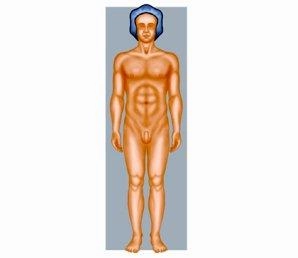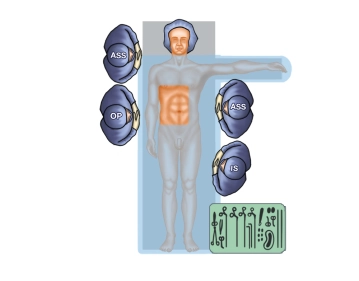Malignant tumors:
- Liver metastasis
- Hepatocellular carcinoma (HCC)
- Cholangiocellular carcinoma (CCC)
Benign tumors:
- Adenoma
- Focal nodular hyperplasia (FNH)
Start your free 3-day trial — no credit card required, full access included
Malignant tumors:
Benign tumors:
Recurrence, seroma, (secondary) bleeding, hematoma, need for blood transfusion with corresponding risks, necrosis of hepatic parenchyma, biliary fistula, bilioma, biliary peritonitis, bile duct stenosis, hemobilia, liver failure with coma, arrhythmias, cardiovascular disorders, thromboembolic complications, positioning injuries, electrosurgery injuries, injury of adjacent organs, pleural effusion requiring drainage, abscess, secondary wound healing, abdominal wound dehiscence, incisional hernia, adhesions, revision surgery, death
Supine, right arm adducted, left arm abducted, slight hyperflexion at thoracolumbar junction
Postoperative analgesia: Adequate pain management; in case of severe pain complement epidural catheter with systemic analgesics, taking into account the potential liver toxicity; follow the link to PROSPECT (Procedures Specific Postoperative Pain Management) or this link to the International Guideline Library.
Postoperative care: Remove abdominal drain on postoperative day 1 - 5, depending on the quality and volume of the secretions; remove skin sutures/staples around postoperative day 12.
Deep venous thrombosis prophylaxis: Unless contraindicated, the high risk of thromboembolism calls for prophylactic physical measures and low-molecular-weight heparin, adapted to weight or dispositional risk, for at least 2 weeks, possibly up to 6 weeks. Note: Renal function, HIT II (history, platelet check). This link will take you to the International Guideline Library.
Ambulation: Immediate ambulation, phased return to full physical activity.
Physical and respiratory therapy
Diet: In absence of atony, nausea or vomiting liquids on day of surgery If tolerated, rapid return to unrestricted diet.
Bowel movement: Laxatives may have to be started on postoperative day 2
Work disability: Depending on patient occupation between 3 and 6 weeks

